#15th c. France
Text
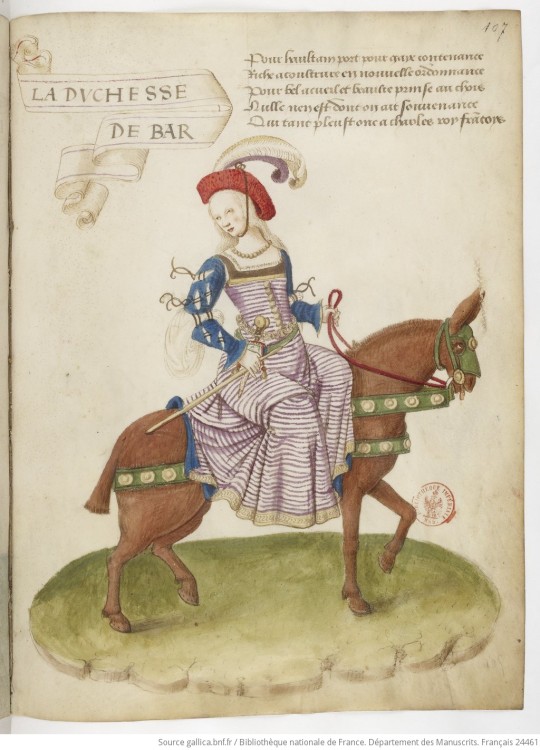


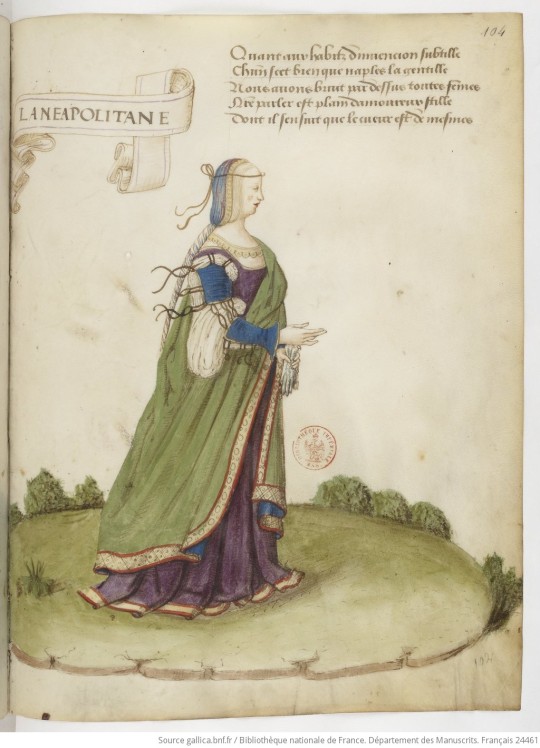


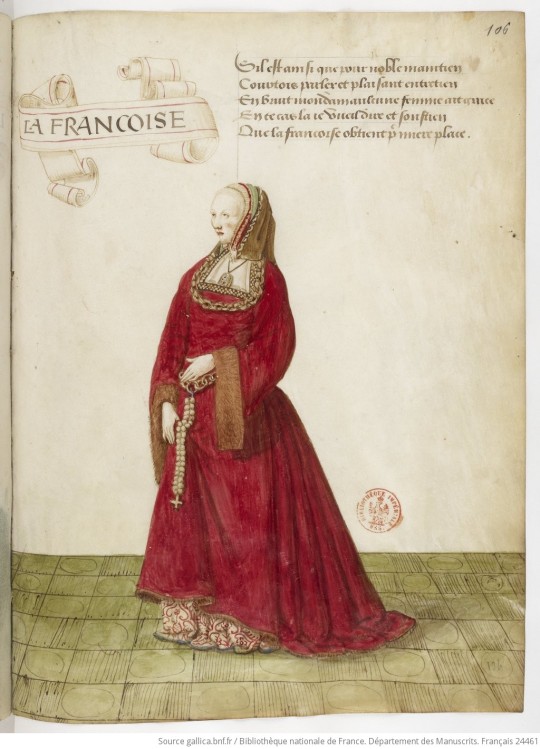


Collection of drawings accompanied by texts, known as Recueil Robertet, 1490-1520 France;
The Duchess of Bar
Women from Lombardy and Venice
Women from Naples and Florence
Women from Germany and France
Green and Yellow; White and Blue
#late 15th century#early 16th century#renaissance#manuscript#illuminated manuscript#illustrated manuscript#16th century#15th century#mdp16th c.#mdp15th c.#France#15th c. France#16th c. France#italy#costume illustration#illustration#15th c. italy#16th c. Italy#costume book#German Style#Germany#15th c. Germany#16th c. Germany#horseback#riding
129 notes
·
View notes
Text


fantastic beasts
in "le secret de l'histoire naturelle [...]", illuminated manuscript, france, 15th c.
source: Paris, BnF, Français 22971, fol. 16r
#15th century#medieval art#le secret de l'histoire naturelle#dragons#snakes#unicorns#fantastical art
934 notes
·
View notes
Text
Best (dumbest) Dragon Age lore roundup:
- the name of the setting literally just being "The DA Setting"
- the setting just being a hemisphere flipped version of Europe c. 15th century, down to having fantasy versions of England, France, Spain, the HRE, the Byzantine Empire, and the Ottoman Empire roughly in the same place as real life just flipped over an x axis
- girlboss Jesus/Prophet Muhammed
- girlboss Catholic Church
- girlboss Pope, who can actually be one of your party members by the end of the third game
- the Mage/Templar system aka Harry Potter and the Stanford Prison Experiment
- Broodmothers (sorry BioWare you can't retcon them away as much as you want to)
- the elven pantheon were actually just super-powered slaveowners and that's why it's the elves' fault they got colonized
- Literally Just France where enforced bisexuality is the current meta for political advancement
- qunari gender roles as a way to explain the existence of trans people
- evil mass murdering Machiavellian lesbians, a trope BioWare loved so much they did it twice
- one of your companions being a bestselling novelist despite the afaik lack of printing presses or mass literacy
529 notes
·
View notes
Text





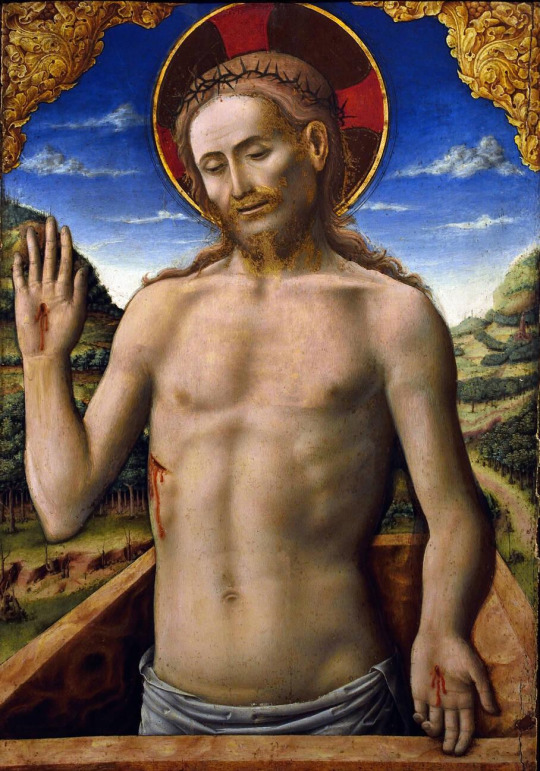








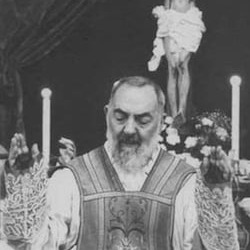


TRANSCENDING, AUGMENTING : DOPAGE, SUFFERING, GOD AND CYCLING
Pope Warns Athletes on Doping, Huffington Post, 2010 / A blood bag confiscated as part of an antidoping raid, Operation Puerto blood bags must be released to authorities, judge orders, The Guardian, 2016 / A Belgian relic of Christ's blood, Jezus Christus, de bekendste relikwieën, Recordatio, 2019 / The Transcendent Pain, Bill Gifford, Bicycling, 2012 / Unknown cyclist peels skin off palm, CYCLING ART BLOG (Blogspot), n.d. / Jesus Protruding from the Sepulchre, Antonio Vivarini, 15th c. / Why we like suffering, Frank Strack, Cyclist, 2016 / Primož Roglič celebrates winning the 17th stage of the Tour de France, Getty Images, 2017 / Primož Roglič suffers as he crosses the line following a crash at La Vuelta de España, Getty Images, 2022 / The Cyclist and His Shadow, François Thomazeau, 2022 / Saint John the Baptist looking up to the right, holding a bowl, Guercino, n.d. / Tadej Pogačar cracks during the Tour de France, Vincent Kalut, 2023 / The Cyclist and His Shadow, François Thomazeau, 2022 / Lance Armstrong winning the 17th stage of the Tour de France, Associated Press, 2004 / Padre Pio shows his self-inflicted stigmata, n.d. / Marco Pantani wins at Montecampione during the Giro d'Italia, Bettini Photo, 1998 / The Cyclist and His Shadow, François Thomazeau, 2022
108 notes
·
View notes
Note

scorpion from a book of hours, france, c. 1440–50 (Oxford, Bodleian Library, MS. Auct. D. inf. 2. 11, fol. 10r)
Delightful creature here. I know I frequently describe medieval critters as having "canine" features -- possibly because I'm very much a Dog Person and that's kind of my default frame of reference for nonhuman mammals -- but this one here... there's no way to interpret that head in a non-canine way, right? it's not just me? that is a Dog.
Anyway, past that little neck ruff (charming!) we have a very well-executed Lizard With Pincers. Something else I like about this is that the legs with the pincers look kind of... mechanical? Like, through modern eyes, they look like something you'd expect to see in some sort of science-fiction robot design, right? But surely this was not the goal of the original 15th-century artist. (I thought about whether the detailing on the legs here qualified as an exoskeleton, but since it's just on the legs... maybe half a point?)
Also this is another giant one, which I know is just artistic convention -- make the animal bigger than it is so you can put it in a human-scale landscape and still see it -- but it's hard to ignore.
Points:
Small Scuttling Beaſtie? ½, too large
Pincers? ✓
Exoskeleton or Shell? ½, see above
Visible Stinger? ✓, look close
Limbs? 6
As for vibes, there are definitely others I find more pleasant, but the neck ruff and dog head make this notably better than your standard scorpion, so it gets a 4/5.
That leaves us with a total of:
7.6 / 10
Who's a good little horror? it is you.
40 notes
·
View notes
Note
Themed VOR two-fer, s'il vous plait: Joan of Arc and Hong Xiuquan. Thanks in advance!
So these people are almost cheating in a sense, right? The "replacement" for Joan of Arc and Hong Xiuquan is fucking no one. If they don't exist, their social role vanishes, there is no Lady of France or Taiping Rebellion without them. VOR is a good model for people who are *given* power by a system, because you are faced with the question: do I remember them because they were uniquely good with that power? Or do I remember them simply because the system gave them the power, that anyone could have wielded? Meanwhile people like Hong Xiuquan simply made power themselves out of whole cloth, we only have heard about them because they were the miraculous people who could do that.
So I think maybe its not a great lens for them. You can still do it though if you want - on a comparative scale, Joan of Arc i'd personally give a C+? As a woman military-religious figure in 15th century France, its just so hard to get any traction on that front, to become a symbol is a huge accomplishment. But her military achievements are greatly exaggerated, she was a bit of a mascot - she would say "attack attack attack" over and over to her "fellow" commanders, and when they 'agreed' she gets the credit for divine fervor, when they didn't its forgotten about. She also has the Firefly effect going on - we only remember her because she was cancelled killed.
Hong Xiuquan is S-tier. To be that crazy, that radical, and launch that successful of a rebellion? He killed almost as many people as World War 1!! That's results, baby.
And come on: "On conquering Nanjing, Marquis Zeng Guofan exhumed Hong Xuiquan's body, had him cremated, and had his ashes blasted out of a cannon to ensure that his remains had no resting place, as eternal punishment for the uprising". This guy fucks.
28 notes
·
View notes
Text
Louis XIII and his cooking adventures 🍴🥞
When it comes to our Louis XIII cult, I often refer to the king's iconic omelettes, but what about his other stuff? For example, he really loved sweets (like beignets or jams), but could he also cook them? The answer is YES, and that's not even all yet!
Louis was a curious child who's head was already filled with various interests and cooking became one of them when he was only ten years old at the time (which is quite unusual for a king). First ever case of the king cooking was recorded on february 11th of 1611, when he was preparing milk soups for the Duchess of Guise / Catherine of Cleves. So milk soup, most likely, could be Louis' very first dish made by himself!
Of course many kids have a sweet tooth and our precious omelette king was not an exception which I guess is why he started to learn how to cook mostly from recipes of sweets. Also, take a shot every time I say "sweets" or "cooking" (don't..) 🕊️
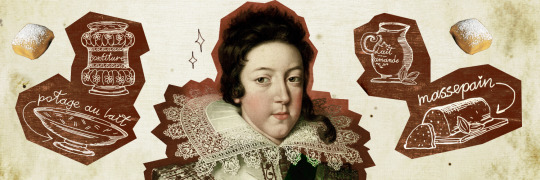
So, among 17th century royal sw- *ahem* DESSERTS we had in our menu – a jam, quince jelly, beignets (basically french donuts) and marzipans. In a well-known, among many of y'all Louis stalkers, journal of his doctor Jean Héroard I found some clear evidence of Louis XIII cooking some of these himself, so here it is feat. me periodically panicking over my own translation because my half-french friend is too busy atm and I don’t wanna bother them:
June 6th, 1611 — «He walks through the corridor from the study to the paneled gallery where he had an oven for making jams, he is amused to see how it's done.» I know it's not exactly him cooking, but I just wanted to leave it here :")
October 15th, 1612 — «Madame comes to see him; he has fun making jam with Mademoiselle de Vendôme»
January 29th, 1613 — «He often has fun making almond milk and marzipans at Madame's house.»
March 6th, 1615 — «It was very cold; he goes to the kitchen, makes omelettes, beignets, fried eggs; it was he who made them and ate a little of that he tasted.» Pretty sure the last few words could be translated better because it's always rather my terrible french or a little confusing way of Héroard's writing, so feel free to correct me.
February 3rd, 1616 — «He is preparing a small snack of dry jam for the queen, who must come to him at two o'clock. After going back to bed, he happily forms various battalions of his little silver men.»
February 5th, 1622 — «He leaves Saint-Germain, goes to Pontoise, where he enjoys making and eating beignets; while dining at Cormeille, he suddenly goes to the goblet in which he makes little cream puffs.» The original text says «petits choux au lait» and I have no idea what could that exactly be, but it seems like some sort of little éclair-like buns made of milk? Little cream puffs?? Maybe by «choux au lait» Jean meant «choux à la crème» which were invented back in 1540 in France.
I know you've been waiting for the quince jelly too, but unfortunately I couldn't find anything about the jelly :c Though, judging by what we've got here It's still quite possible Louis could cook quince jelly as well, hmm... Anyways, if you know something I don't know of the jelly mystery, hit me up!
In the future, this great love for desserts will be inherited by his son Philippe I, Duke of Orléans (brother of Louis XIV), who is also a very interesting character in history!!
In conclusion I must say that Louis not only had a sweet tooth, but also a big love for trying out different things, all this curiosity and pure excitement, even when it comes to something so simple and familiar like food, will never ever stop to fascinate me :"D
Btw speaking about Louis 'trying out different things', I of course still have a lot to share on this as well! Stay tuned and have a good day/night 💘💘💘
#I can't believe I wasted more time on the picture than the post itself#But at least now I can go make more Louis content :“”D#In my next post I will most likely cover something that is not food because he had A LOT of other talents obviously hahahaah#Honestly I could talk about him 24/7.... I just can't always be online to flood you with all this :“(#17th century#louis xiii#history of food#louis xiii le juste#king louis xiii
18 notes
·
View notes
Text
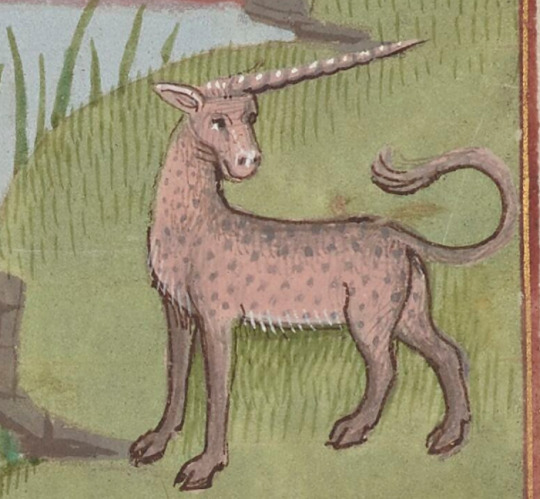
The "animals of India", from a late 15th-century manuscript of Le secret de l'histoire naturelle contenant les merveilles et choses mémorables du monde
Origin: France
Date: c. 1480-1485
Now Paris, BnF Fr 22971, f. 31r

#unicorn#unicorns#medieval unicorn#elephant#medieval elephant#global middle ages#manuscript#illuminated manuscript#15th century
34 notes
·
View notes
Text


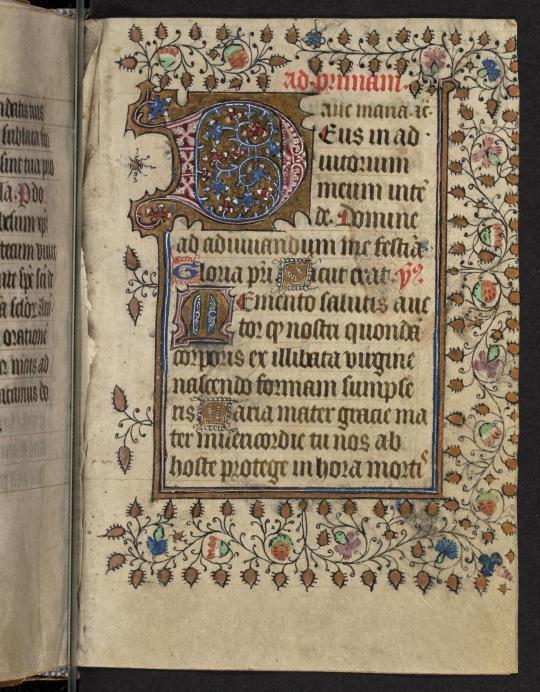


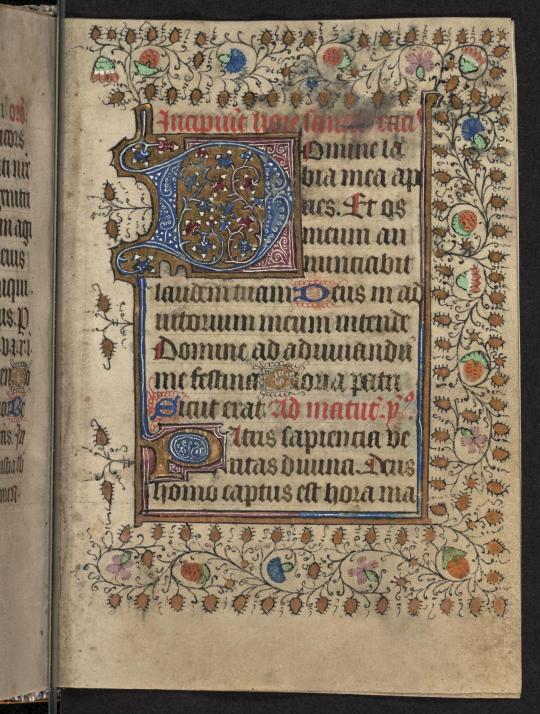

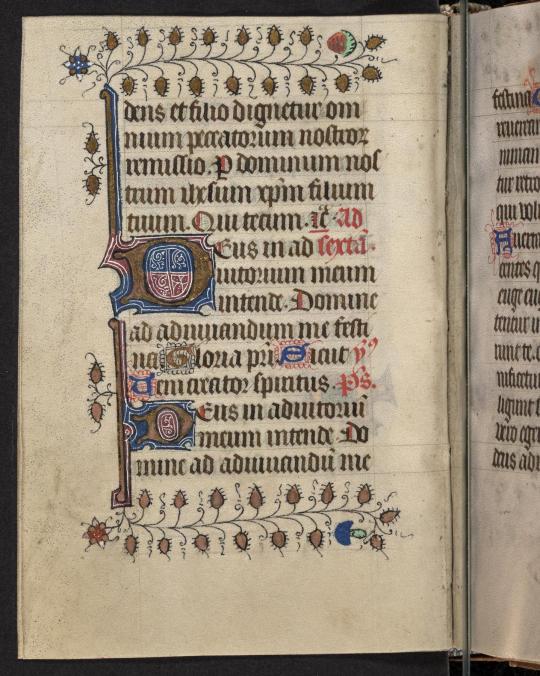


Today's #YearOfHours is Lehigh University Special Collections MS 15, a fragment of a book of hours for Franciscan use. If it ever contained miniatures they are gone now, but large illuminated initials remain. Written in Northern France, last half of the 15th c.
Online:
#medieval#manuscript#medieval manuscript#book of hours#year of hours#miniatures#initials#illuminated initials#illuminated manuscript#15th century#france#art history#rare books#book history
143 notes
·
View notes
Text

MWW Artwork of the Day (1/31/24)
Medieval France (12th-14th c.)
The Three Magi (c. 1145)
Sandstone sculptures
Western (Royal) Portal, Chartres Cathedral
This is the earliest surviving instance of Gothic sculpture. Gothic art emerged in Île-de-France, France, in the early 12th century at the Abbey Church of St Denis built by Abbot Suger. The style rapidly spread beyond its origins in architecture to sculpture, both monumental and personal in size, textile art, and painting, which took a variety of forms, including fresco, stained glass, the illuminated manuscript, and panel painting. Regional variations of architecture remained important, even when, by the late 14th century, a coherent universal style known as International Gothic had evolved, which continued until the late 15th century, and beyond in many areas.
19 notes
·
View notes
Note
Hello! I was wondering about this squared headdress found in the More family portrait. Is it a French or English fashion?

Nowadays we(Tudor fandom) tend to call it the flat hood.
Long story short. We cannot safely determine its point of origin. It is for sure from N-W Europe, but it can be found in art across France, England and Netherlands, but doesn't seem to ever gain great prominance in either.
It is very similiar to french hoods, and often mistaken for it, and for that reason it is often overlooked and if you try to google it you will most likely get picture of kitchen flat hoods..not of the headwear.
Here are some more examples of it:
Portrait of a Husband and Wife, Philadelphia Museum of Art:

It is unclear where this portrait is from, because of damage to the coats of arms and fact that easiest recognizeable one(in woman's coat) Argent, a bend sable(white field, black bend) can belong to 3 ffamilies. Paynell(english), Raweneck(german) and La Barga(french).
But the dress could be English.
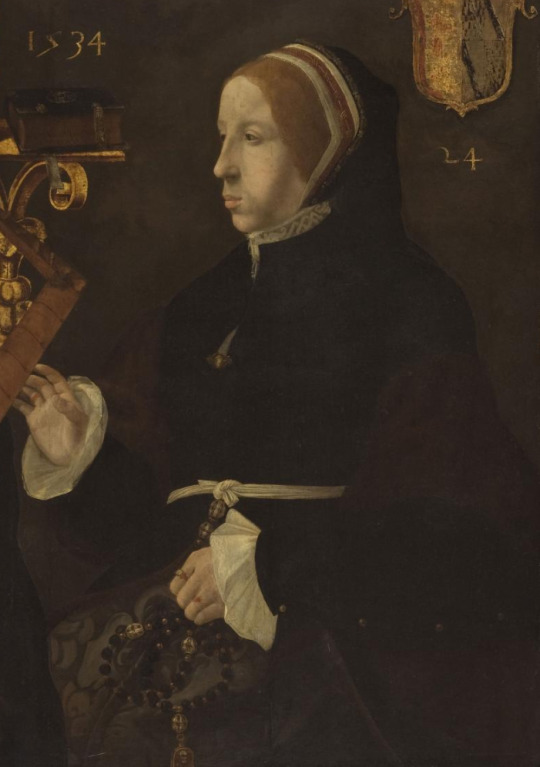
Mary Rose Tudor in 1514
if you look to the right of crown, just tiny bellow you will see the sharp edge, which should be on french hood.

Margaret of Austria(born in Netherlands), c.1505/6
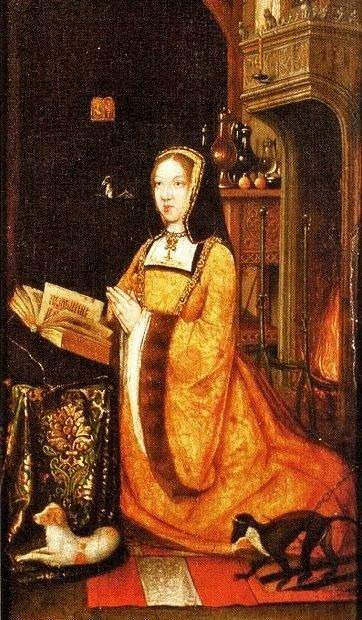
Then if we look at iluminations in-Ovide, Héroïdes, traduction d'Octavien de Saint-Gelais by French illuminator Robinet Testard, (working cca 1470-1531), which juding by the dresses probably originated in late 80s/early 1490s.
It is interesting it within same manuscript we have several different headwears:

1,3,4 all have same underlayer-this probably:

(minus the veil)
But we remove it...the differences are more visible(sorry about my poor fotoshoping skill):

1-is either flat or gable shaped cap, no veil-thus not true hood
It might be ancestor of paste of gable hood, which gives it is typical gable shape.
2-french hood with tranluscent veil at front, one typical early forms of french hood
3-french hood
4-flat hood, and likely one of ancestors of netherlandish suptype of french hoods

It is looking quite similiar to early forms of theirs.


Especially this one in close up:

But it is more round, than squarish in way that we associate with flat hoods.
What i am trying to say is that the headwear originated in 15th century already, probably around same time gable and french hoods did.
Thus if we wish to use it for recreation of outfit of somebody in England, yes we could already put it to reign of Henry VII-perhaps without that firm top, but we have to try to mimic style of french or gable hoods of the time...because those headwears evolved together, correlating to surprising degree.
But who knows, maybe it was around even before.
For example this one, If it is ment to be gable hood, then tip of gable is in wrong spot, but had it been flat hood it is correctly done:
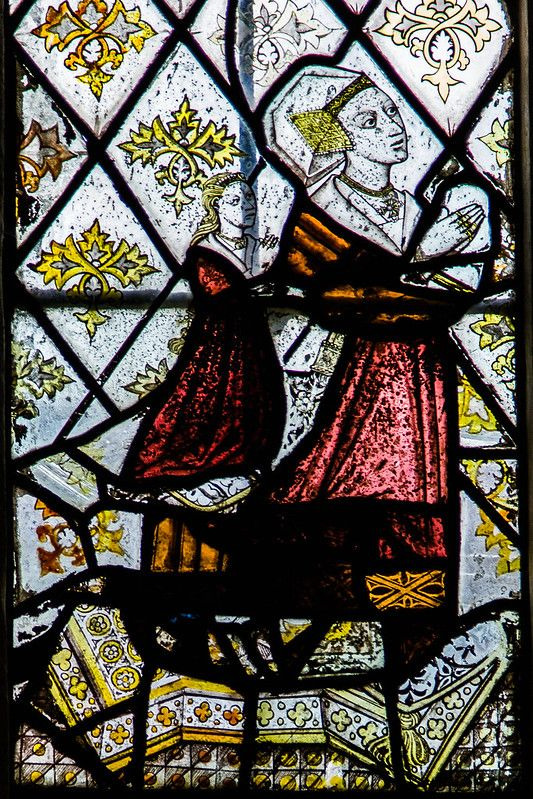
I personally like flat hoods very much, their shape and all.
Unfortunately the amount of surviving depictions of it, point to it never being historically very popular in its own right.
Thus use it sparsely.
But then, we have great lack of surving portraits+other depictions from other countries from N-W Europe, hence we cannot rule out it wasnt popular in those.
PS: Now who wants to bet that in next 7 days I will find something which will make rethink everything which I just wrote?-Because usually it is the case.
If you know of more examples of this headwear(aside from Holbein's work), I would love for you guys to send me link.
10 notes
·
View notes
Text

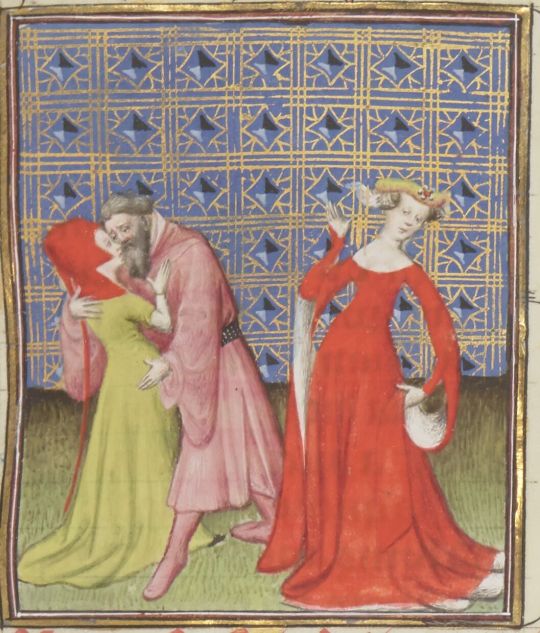




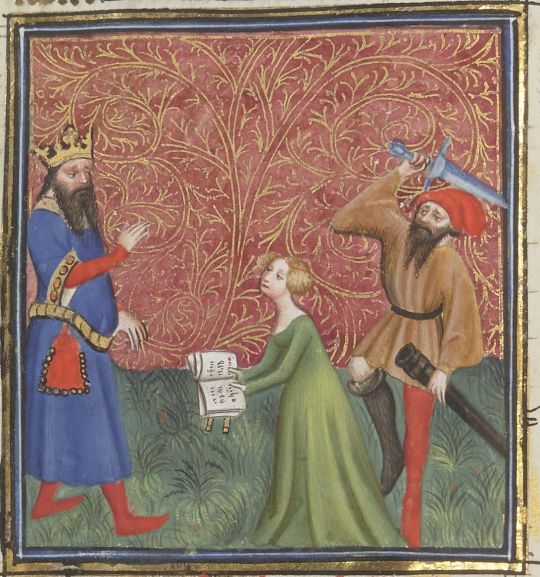


Illustrated manuscript of "Cas des nobles hommes et femmes", written by Giovanni Boccacio", made in France, 1401-1500
#15th century#france#15th c. france#mdp15th c.#illuminated manuscript#medieval manuscript#manuscript#medieval
193 notes
·
View notes
Text

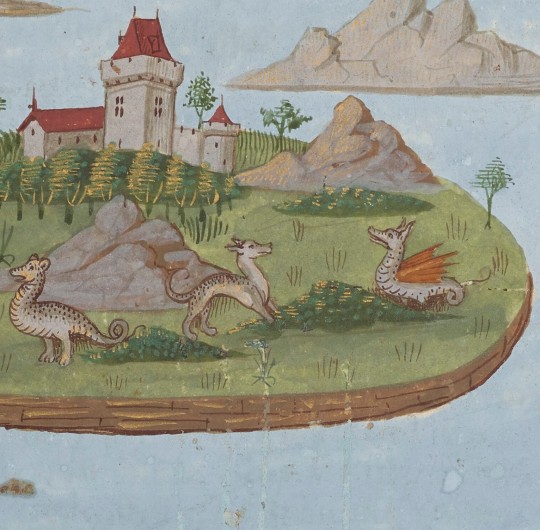
floating island
in "le secret de l'histoire naturelle [...]", illuminated manuscript, france, 15th c.
source: Paris, BnF, Français 22971, fol. 58r
#this is soo pretty imo#15th century#illuminated manuscript#island#floating island#le secret de l'histoire naturelle#dragons
822 notes
·
View notes
Text
The Cary sheet, an uncut sheet from Milan, c. 1500.
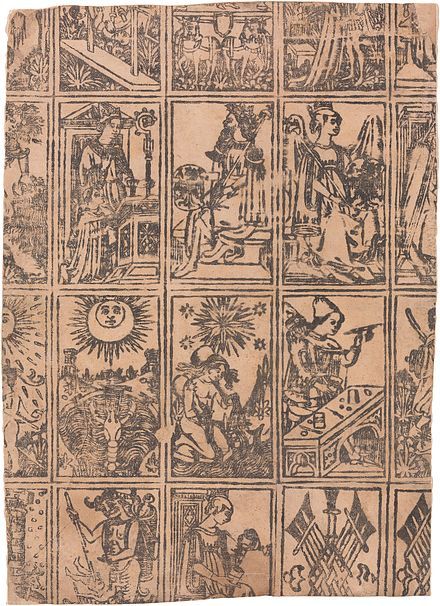
Research by Michael Dummett and others demonstrates that the tarot pack was invented in northern Italyin the early 15th century and introduced into southern France when the French conquered Milan and the Piedmont in 1499. The antecedents of the Tarot de Marseille would then have been introduced into southern France at around that time. All Italian-suited tarot decks outside of Italy are descended from the Milan–Marseilles type with the exception of some early French and Belgian packs which show mixed influence from Bolognese tarot (see below).[2] The earliest surviving cards of the Marseilles pattern were produced by Philippe Vachier of Marseilles in 1639 and went up for sale in 2023, having recently been discovered by Thierry Depaulis.[3][k
Tarot of Marseilles
Wikipedia
6 notes
·
View notes
Photo
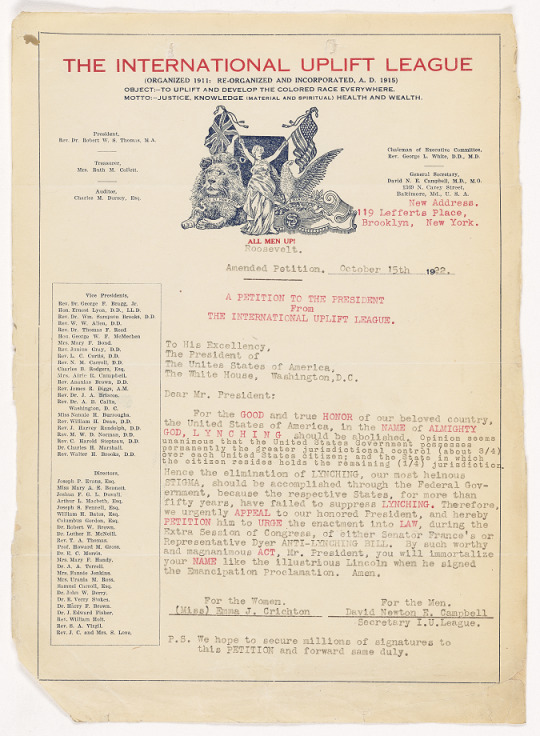
“ . . . we urgently appeal to our honored President, and hereby PETITION him to URGE the enactment into LAW . . . of either Senator France's or Representative Dyer ANTI-LYNCHING BILL.” Petition from the International Uplift League, 10/15/1922.
File Unit: 158260 section 3 #1, 1904 - 1974
Series: Straight Numerical Files, 1904 - 1974
Record Group 60: General Records of the Department of Justice, 1790 - 2002
Transcription:
[HEADER]
The International Uplift League
(Organized 1911: Re-Organized and Incorporated, A.D. 1915)
Object:-To Uplift and Develop the Colored Race Everywhere.
Motto:-Justice, Knowledge (Material and Spiritual) Health and Wealth.
President, Rev. Dr. Robert W. S. Thomas, M.A.
Treasurer, Mrs. Ruth M. Collett
Auditor, Charles M. Dorsey, Esq.
Chairman of the Executive Committee, Rev. George L. White, D.D., M.D.
General Secretary, David N.E. Campbell, M.D., M.O.
1369 N. Carey Street,
Baltimore, Md., U. S. A.
New Address,
119 Lefferts Place,
Brooklyn, New York.
ALL MEN UP!
Roosevelt.
Amended Petition. October 15th 1922.
A PETITION TO THE PRESIDENT
From
THE INTERNATIONAL UPLIFT LEAGUE.
To His Excellency,
The President of
The United States of America,
The White House, Washington, D.C.
Dear Mr. President:
For the GOOD and true HONOR of our beloved country, the United States of America, in the NAME of ALMIGHTY GOD, LYNCHING should be abolished. Opinion seems unanimous that the United States Government possesses permanently the greater jurisdictional control (about 3/4) over each United States Citizen; and the State in which the citizen resides holds the remaining (1/4) jurisdiction.
Hence the elimination of LYNCHING, our most heinous STIGMA, should be accomplished through the Federal Government, because the respective States, for more than fifty years, have failed to suppress LYNCHING. Therefore, we urgently appeal to our honored President, and hereby PETITION him to URGE the enactment into LAW, during the Extra Session of Congress, of either Senator France's or Representative Dyer ANTI-LYNCHING BILL. By such worthy and magnanimous ACT, Mr. President, you will immortalize your NAME like the illustrious Lincoln when we signed the Emancipation Proclamation. Amen.
For the Women.
(Miss) Emma J. Chrichton
For the Men.
David Newton E. Campbell
Secretary I.U. League
P.S. We hope to secure millions of signatures to this PETITION and forward same duly.
VIce Presidents,
Rev. Dr. George F. Bragg, Jr.
Hon. Ernest Lyon, D.D., LL.D.
Rev. Dr. Wm. Sampson Brooks, D.D.
Rev. W.W. Allen, D.D.
Rev. Dr. Thomas F. Reed
Hon. George W.F. McMechen
Mrs. Mary F. Bond.
Rev. Junius Gray, D.D.
Rev. L.C. Curtis, D.D.
Rev. N.M. Carroll, D.D.
Charles B Rodgers, Esq.
Mrs. Alric R. Campbell.
Rev. Ananias Brown, D.D.
Rev. James R. Diggs, A.M.
Rev. Dr. J.A. Briscoe.
Rev. Dr. A.B. Callis, Washington, D.C.
Miss Nannie H. Burroughs.
Rev. William H. Dean, D.D.
Rev. J. Harvey Randolph, D.D.
Rev. M.W.D. Norman, D.D.
Rev. C. Harold Stepteau, D.D.
Dr. Charles H. Marshall.
Rev. Walter H. Brooks, D.D.
Directors,
Joseph P. Evans, Esq.
Miss. Mary A.E. Bennett.
Joshua F.G.L. Duvall.
Arthur L. Macbeth, Esq.
Joseph S. Fennell, Esq.
William H. Bates, Esq.
Columbus Gordon, Esq.
Dr. Robert W. Brown.
Dr. Luther E. McNeill.
Rev. T.A. Thomas.
Prof. Howard M. Gross.
Dr. E.C. Morris.
Mrs. Mary F. Handy.
Dr. A.A. Terrell.
Mrs. Fannie Jenkins.
Mrs. Urania M. Ross.
Samuel Carroll, Esq.
Dr. John W. Derry,
Dr. E. Verry Stokes.
Dr. Harry F. Brown.
Dr. J. Edward Fisher.
Rev. William Holt.
Rev. S.A. Virgil.
Rev. J.C. and Mrs. S. Love.
#archivesgov#October 15#1922#1920s#petitions#right to petition the government for a redress of grievances#lynching#anti-lynching#Black history#African American history
48 notes
·
View notes
Text
Future posts
This is a list of topics I plan to cover in future posts. I'm mostly making this for my own organizational benefit. List is subject to change.
Bog Finds:
Drumkeeragh woman
Meenybraddan woman
Emlagh gown
some 18th-19th c reports of bog bodies that were reburied, and why they break my heart
Costume Book illustrations:
costume prints by an unknown artist, in the Bibliothèque nationale de France, Cabinet des Estampes, and their copies
Lucas De Heere and anti-Irish bigotry
Christoph Weiditz
Codice de Trajes and the Costume Album of Christoph von Sternsee
Questionable Images of Irish Horsemen
Reconstructing clothing:
the "Onion" hat seen in a costume print by an unknown artist, in the Bibliothèque nationale de France
the 16th c. léine
Irish Art:
The 15th c. Carvings from Fethard
late Medieval Jewelry in the NMI
Anglo-Irish effigies
the O'Dea miter and crozier
a drawing from The Great Parchment Book of Waterford
Written Primary sources:
British colonialist statutes and laws
General/Other topics:
historical Irish wool and sheep
a general overview of 16th c Irish Gaelic clothing
'Wilde' and 'Civil' are not social classes
Can we please lay off the Celtic knotwork and blue face paint?
embellishment and embroidery
7 notes
·
View notes